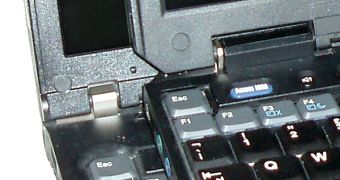To counteract what is clearly a potential problem, professors at the University of Virginia (UV) have envisioned a daring plan, aimed at reducing the heat high-speed computer processors generate while computing large amounts of information very fast. Avik Ghosh and Mircea Stan, both with UV's School of Engineering and Applied Science, believe that re-arranging the second principle of thermodynamics may hold they key to developing cooler and faster computers.
According to the scientists, most current electronics are built to respect a thing called the “thermal equilibrium,” a state in which components exchange heat until they reach a similar temperature. If we consider the level of miniaturization that computer parts undergo every year, we can safely presume that in 10 to 20 years’ time, the heat coming from super-developed processors will be as intense as the Sun’s.
Ghosh and Stan believe that nano-technology holds the key to reaching this objective. A principle called “Brownian ratchet” states that, theoretically, non-equilibrium energy could be transformed into power. Applied to computers, a nano-device installed among other components could transform heat directly into energy, fueling the battery. Needless to say, battery life would be increased substantially, as electrical energy would undergo a sort of “recycling” – turning to heat and then back to energy.
Another principle that is being considered is “Maxwell's Demon,” which stipulates that if there was a way to control the transfer of energy between two components, in theory, one could absorb the heat while the other operated at very low temperatures, as is the case with a processor and a heatsink.
As an immediate application for the future discoveries of the two researchers, processor speeds could become a lot higher, while the laptop itself may run at very low power levels, allowing for the preservation of the battery. This would translate into longer support times, as some batteries now run out just 2-3 hours after they have been fully recharged.

 14 DAY TRIAL //
14 DAY TRIAL //